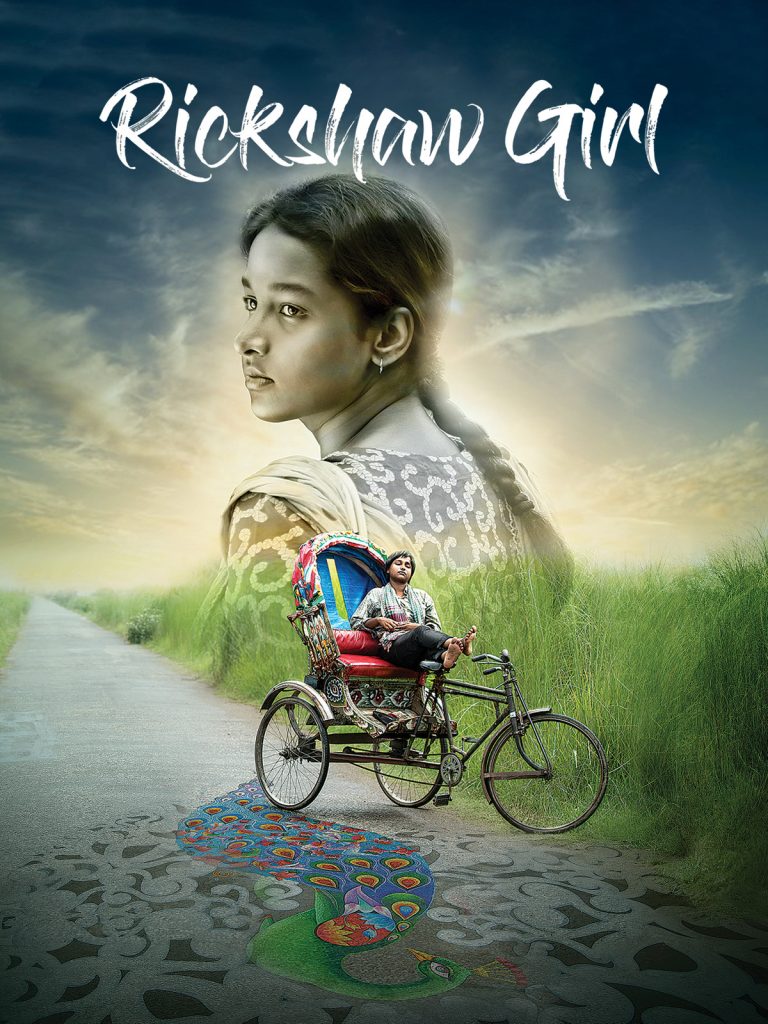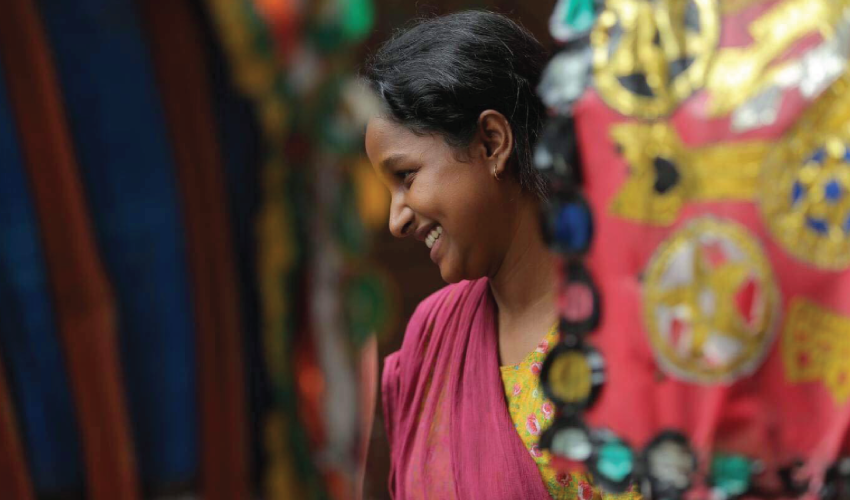A review of Bongo’s Rickshaw Girl
By Ayman Anika
In a world where dreams are often crushed under the weight of reality, Rickshaw Girl – which was recently released in cinemas and is available on OTT platform Bongo – stands as a powerful reminder of resilience, hope, and the boundless strength of a determined young woman.
Directed by Amitabh Reza Chowdhury and based on the young adult novel by Mitali Perkins, the film is an artistic triumph, blending vibrant visuals with a deeply moving story. At its heart is Naima – portrayed with astonishing depth by Novera Rahman – a teenage girl from a small village, whose talent for painting rickshaws is only matched by her unwavering love for her family.
The Journey of a Dreamer
Naima is not your typical village girl. She is a dreamer, an artist, and – most importantly – a fighter. Living in a small village, she finds solace in creating intricate alpona designs on rickshaws and walls.
However, when her father falls gravely ill and their family’s rickshaw is seized by the oppressive village “uncle” Mamun (played by Nasir Uddin Khan), due to unpaid debts, the weight of responsibility falls upon her young shoulders. With limited options, she makes a bold decision: to journey to Dhaka, the bustling capital, in search of work to support her family.

A City of Contrasts
Dhaka is portrayed as a city teeming with life, chaos, and hardship. Amitabh Reza Chowdhury masterfully captures its essence – the narrow alleyways, the deafening honks of traffic, and the vibrant yet unforgiving streets where rickshaw pullers toil under the sweltering sun.
The cinematography is breathtaking, with each frame brimming with rich colors, reflecting Naima’s artistic soul. Her transition from a hopeful village girl to a weary yet determined worker is both heartbreaking and inspiring.
One of the film’s most striking aspects is its raw portrayal of class struggle. The rickshaw pullers, often invisible in the eyes of the privileged, are given voice and dignity in “Rickshaw Girl.” Through Naima’s journey, the audience witnesses the exploitation, camaraderie, and unspoken codes of survival that govern their world.
The Power of Art and Identity
Despite the hardships, Naima never lets go of her passion for painting. Her talent for rickshaw paintingcatches the attention of those around her, leading to unexpected opportunities. This turning point in the film is nothing short of magical. The audience watches as Naima, who had been suppressing her true identity, finds an outlet for self-expression.
The contrast between Naima’s art and her grueling job as a rickshaw puller is beautifully woven into the narrative. The rickshaw, a symbol of struggle, becomes her canvas, and in painting it, she reclaims her voice. In a world that tried to erase her existence, she paints herself back into it.
Performances That Breathe Life into the Story
Novera Rahman’s portrayal of Naima is nothing short of phenomenal. She brings an incredible blend of vulnerability and strength to the character, making the audience feel every triumph and heartbreak she experiences. Her expressive eyes convey hope, despair, and defiance in equal measure.
Nasir Uddin Khan delivers a compelling performance as Mamun, the antagonist whose actions set Naima on her transformative journey. His portrayal adds depth to the narrative, highlighting the systemic challenges faced by those in poverty.
Veteran actress Gulshan Ara Akter Champa lends depth to the story, adding an emotional weight that lingers long after the credits roll.
Guest stars Siam Ahmed and Mumtaheena Chowdhury Toya are delightful to watch, adding charm and lightness to an otherwise intense narrative. Their presence serves as a reminder that kindness and compassion can exist even in the harshest of places.

Breaking Barriers, One Stroke at a Time
At its core, Rickshaw Girl is not just a film about a girl fighting for survival – it’s about challenging societal expectations and reclaiming agency. Naima’s story showcases the power of perseverance and the belief that art can be a vehicle for change.
The film also raises important questions about gender roles in Bangladesh and beyond.
Why is hard labor reserved for men? Why must a girl disguise herself to earn a living? By forcing the audience to confront these realities, Rickshaw Girl becomes more than just a film – it becomes a conversation starter.
Final Thoughts
Amitabh Reza Chowdhury’s Rickshaw Girl is a visually stunning, emotionally charged, and socially relevant masterpiece. It takes the audience on an unforgettable journey through the eyes of a young girl who refuses to be defined by her circumstances.
With powerful performances, breathtaking cinematography, and a story that lingers in the heart, this film is a must-watch.
Whether you are an art lover or simply someone who appreciates a good story, Rickshaw Girl offers something profound. It reminds us that sometimes, all it takes is a little courage and a splash of color to change the world.
- mahjabin rahmanhttps://mansworldbangladesh.com/author/mahjabin/
- mahjabin rahmanhttps://mansworldbangladesh.com/author/mahjabin/
- mahjabin rahmanhttps://mansworldbangladesh.com/author/mahjabin/
- mahjabin rahmanhttps://mansworldbangladesh.com/author/mahjabin/













